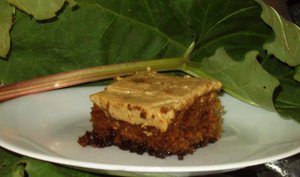
| Rating: | ★★★★★ |
| Category: | Books |
| Genre: | History |
| Author: | Professor Robert Bucholz |
If you’re the kind of person who has considered going back to school “just for fun” then you’ll understand my excitement when I tell you about some fantastic classes I’ve taken lately while running errands and folding laundry. The Teaching Company invites highly recommended professors in various fields of study to develop a specific lecture series which is then made available on cassette tape, CD, video tape and DVD.
I recently finished listening to the series, The History of England from the Tudors to the Stuarts, by Professor Robert Bucholz. Despite the fact that history was my most despised subject in junior and senior high (with the exception of AP History my junior year), this class was riveting. Bucholz is an engaging speaker, including delightful asides that add flavor and texture to his narratives. He is clearly excited by his subject matter and thrilled to be sharing it with others.
Though this class concerns the Tudors and the Stuarts, Bucholz backs up to 1377 when Edward III dies and is succeeded by his grandson, Richard II. The fighting between the Lancastrians and Yorkists (which later came to be referred to as the War of the Roses) made for not only political turmoil during that time period but confusing listening for me as the student. I played some of these early tapes twice to make sure I understood what was going on. (Bucholz even apologizes for the confusion, although the real problem was that there were really too many Richards, Edwards and Henrys for the countries own good.)
Finally Henry VII gained the upper hand and the history of England settled into a time line that was a bit easier to follow (with the exception later on of a few too many Marys. Honestly, these people needed some fresh “What to name your baby” books. They had an utter lack of imagination when it came to naming their children.)
Bucholz, of course, covers some rather notable monarchs in this class, such as Henry VIII, Queen Mary I, and Elizabeth I. (I have to be honest, before this class, these three, along with perhaps, Queen Victoria and Queen Elizabeth II, were the only kings or queens that I had even a glimmer of knowledge about.) I think it’s safe to say that these three notables carry a lot of baggage with them. For example, who doesn’t think “Bloody Mary” upon hearing of Mary I or think of Henry VIII lopping of the head of one wife in order to go marry another? Yet I believe that Bucholz did a great job of rounding out these well knowns, delving into the motives behind their actions (Henry VIII was worried about not leaving a male successor. The thought of Mary or Elizabeth being left as the heirs to the throne haunted him.) as well as comparing the monarchs so that the actions of one could be seen more clearly in light of the actions of the others. (Elizabeth killed just as many Catholics as Mary had killed Protestants, but Elizabeth was the one that got to write the history books on Mary and she found it convenient to add the adjective “bloody” to her sister’s name.)
Likewise, I think Bucholz covered the ridiculous amount of religious turmoil quite evenly, neither ridiculing nor exalting any of the factions, but simply explaining where they were coming from, what their goals were, and how utterly unsettling all of this religious change and upheaval was for a people who had quite comfortably been, well, whatever the king or queen had been at the time. The civil war and the time of Cromwell led to an amount of religious freedom that, in the end, the country simply couldn't tolerate. Even those who had led some of the changes realized it was all too much. Yet, as easy as it would be to look rather contemptuously upon much of the religious proceedings during these times, I felt that Bucholz remained well above the fray, relating the events clearly without soaking them first in his own prejudiced spin.
I listened to this tape series during the Autumn of 2006 and visited England in January 2007. It was exciting for someone to mention Warrick castle and the first thing that would pop into my mind wasn't "What castle?" but "Ah! Warrick, the King Maker!" The places we visited on our trip had more meaning since I could relate to them with some sense of historical context that I simply wouldn't have had otherwise.
I listened to this class on cassette tape and it worked well in that format. But I suspect that I missed out on several portraits of kings, queens, and other notables that would have been nice to see. Each box of tapes comes with a booklet filled with outlines of the lectures, but unfortunately, pictures are not included.
In the back of each booklet is a bibliography with the books and other resources sorted into categories such as "Essential Reading" and "Supplementary Reading" as well as by time period or location.
Other resources that I discovered in my study of English history:
A rockin' time line of Britain by the BBC
A family tree of the British monarchs on wikipedia
This was an excellent class and I highly recommend it. Not only is the time period that is covered fascinating, but as Professor Bucholz points out in his closing lecture, many of the struggles that the English went through during this time led directly to the philosophies and values that led to the founding of the United States of America soon after. And Professor Bucholz's enthusiasm for his subject matter is infectious. He's a delightful orator and I must confess that his fervor in his closing remarks were almost enough to make me climb upon a table and shout, "I'm proud to be English!" (despite the fact that I'm nothing of the sort, being far more Ukrainian than anything).




















